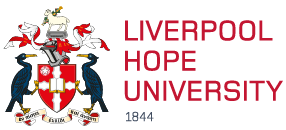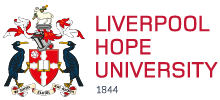Reverend Dr Taras Khomych, Lecturer in Early Christian History and Byzantine Theology, discusses this year’s Week of Prayer and the theme of reconciliation.
The Week of Prayer for Christian Unity, which is traditionally observed from 18th – 25th January, this year focuses on the theme of reconciliation and taking as its motto the words of St Paul from the Second Epistle to the Corinthians: ‘The Love of Christ compels us’. Taking into consideration that this year marks the 500th anniversary of the Protestant Reformation, a special responsibility for the preparation of the Week of Prayer fell on the Council of Christian Churches in Germany, where the Reformation movement began, spreading quickly throughout entire Europe and beyond. Although Martin Luther, who stood at the origins of the Reformation, did not intend to split the Church, his protest set in motion a chain of unfortunate events, which resulted in multiple divisions, violence and wars. After 500 years of turbulent history, Christians of different denominations can eventually assemble and pray together in peace. This is an undeniable achievement of the ecumenical movement, which started at the beginning of the XX century. The mere fact that Protestants and Catholics, once irreconcilable enemies, now assemble and worship together cannot be underestimated. It is worth remembering, however, that the peaceful coexistence is not the aim. The goal of ecumenism is a full visible unity of Christians in one Body of Christ, the Church, so that “all of them may be one” (John 17). In this respect, Christians of different denominations do need to pray and work for the removal of any remaining obstacles on the way to the full visible unity.
In addition to this obviously religious aspect of this year’s Week of Prayer, there is yet another dimension. The German organising team has chosen crossing barriers as a special symbol of this year’s observance, alluding to the Berlin Wall, with the fall of which ‘Germany experienced how a seemingly insurmountable wall could be brought down. The fall of this wall is a symbol of hope that, with the love of God, nothing is impossible’. Coming from the former Soviet Union, from behind the “Iron Curtain”, I realize how powerful and liberating this symbol is. For many decades, the Union of Soviet Socialist Republics (USSR) with its so-called “satellite” countries, including the former German Democratic Republic (now East Germany) appeared unshakable and impenetrable from outside. At the same time, people living behind the wall had no choice but to put up with a deep corruption built in into the entire Soviet system, in politics, economics and so forth. The Berlin Wall effectively served as a means of separation and manipulation. After the destruction of the Berlin Wall in 1989, and the subsequent collapse of Soviet Union in 1991, the former countries of the so-called Eastern block wholeheartedly embraced their independence. It was widely hoped that never such an experiment should happen again. It may be sadly observed that this hope is being constantly challenged in our contemporary society, which, as recent global developments have shown, tends to favour precisely those who are keen to erect all kinds of walls.



